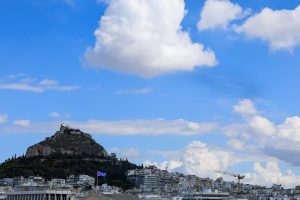The bridge was, by all accounts, built by the descendants of the Spartan warriors of the 5th century BC during the reign of Augustus (late 1st century BC), who granted them the ancient harbor-settlement of Kardamili. The latter is a stunning, in beauty, site on the Messinian Bay.
The bridge is shrouded in myths, the most famous one linked to the mythical love affair of Paris of Troy and Helen of Sparta, most recently seen on the big screen in the movie “Troy”.
Paris, the son of King Priam of Troy, as the legend goes, crossed from this bridge with the beautiful Helen, wife of King Menelaus of Sparta, heading for the islet of Cranae in Gytheio, from where they sailed to Troy, in northwest Asia Minor.
The locals associated it with the flight to Troy of Helen and the appearance at night of the ghost of the wife of the chief mason, who was sacrificed to lay the foundations of the bridge.
But there are two more myths connected with the structure, one related to the feared demi-god Achilles, who fought on the shores of Troy, and another to Telemachus, the son of ingenious Odysseus, King of Ithaca, whose 10-year-long journey was retold in Homer’s “Odyssey”.
The son of Achilles, Pyrrhus or Neoptolemus, according to legend, also crossed from the same bridge, coming from Kardamili through Mt. Taygetus towards Sparta to marry Menelaus and Helen’s daughter, Hermione.
A third myth states that Telemachus crossed this same bridge, coming from Pylos, the kingdom of Nestor, in order to travel to Sparta to ask Menelaus about his father, Odysseus, after the Greeks returned victorious from Troy.
The bridge is considered one of the oldest functioning bridges in Europe. It bears a layer of arch stones, and the diameter of its arch is estimated at about four meters, while the deck, the passageway, is flat.


